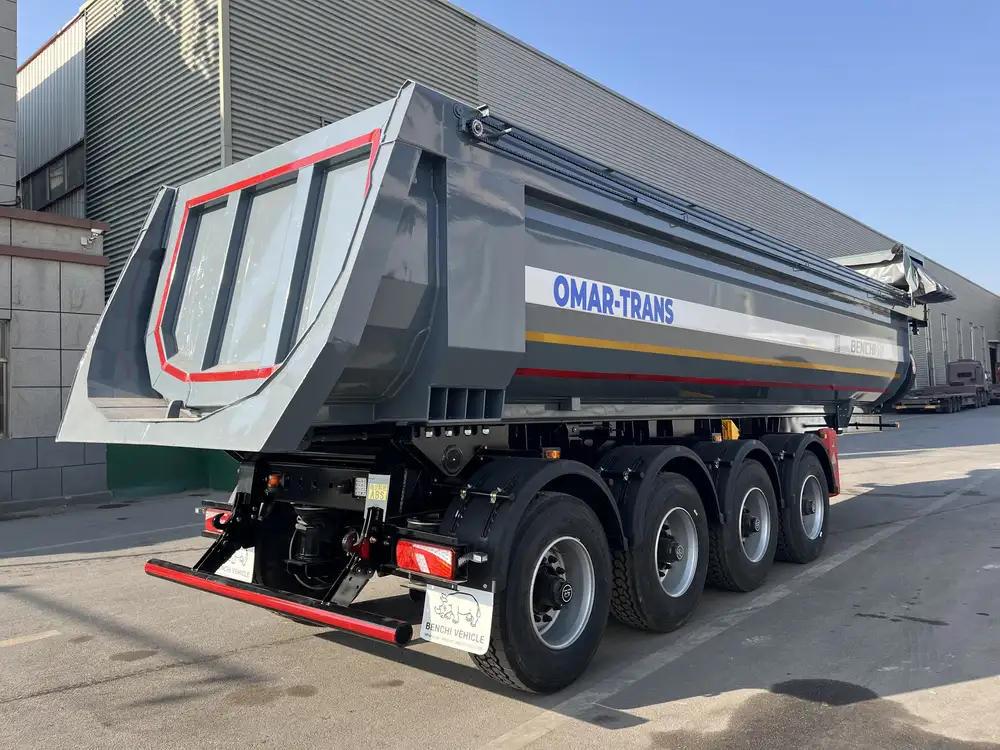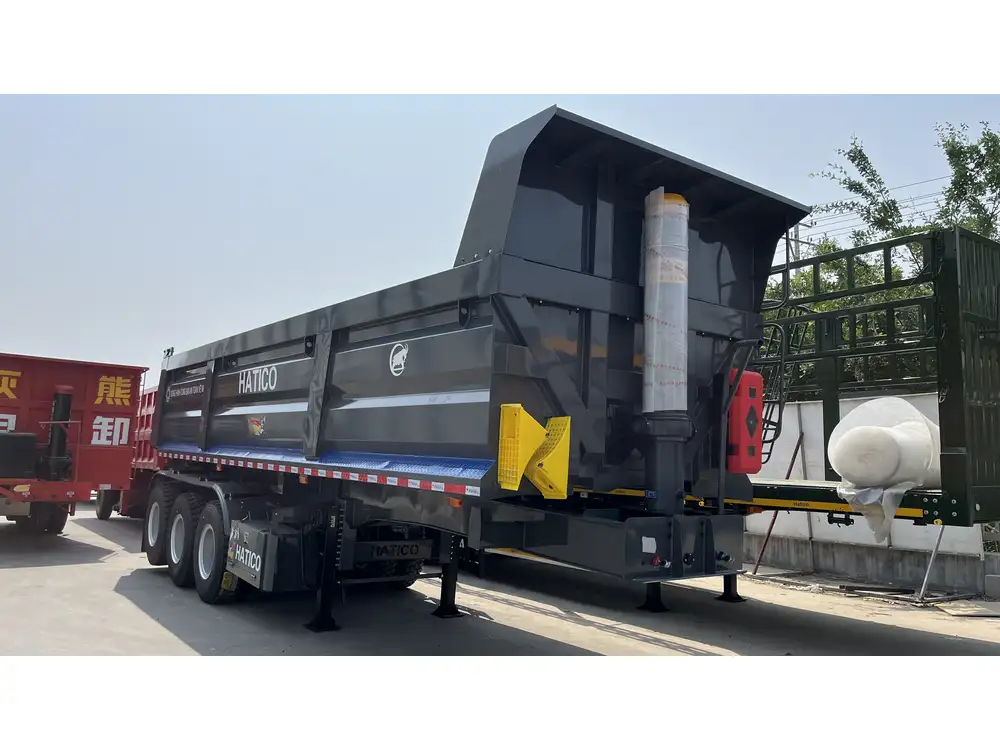Transporting hazardous materials (hazmat) is a complex and specialized task that demands rigorous adherence to safety standards, regulatory compliance, and the use of specific equipment. Understanding which trailers are best suited for hauling hazmat containers is crucial for both manufacturers and operators in the logistics and freight industries. In this article, we explore the various trailer types, design considerations, regulatory aspects, and safety protocols necessary for hauling hazmat containers effectively.
Types of Trailers for Hauling Hazmat Containers
When it comes to transporting hazmat, several trailer types are employed, each serving distinct purposes and requirements. Below is a comparison of the most commonly used trailer types for this specialized task:
| Trailer Type | Description | Best for |
|---|---|---|
| Flatbed Trailers | These trailers feature a completely flat surface without sides. | Large, cylindrical, or multi-container loads. |
| Enclosed Trailers | Full enclosure that protects loads from external elements. | Sensitive materials needing extra security. |
| Tank Trailers | Designed to transport liquids, these trailers have a specialized shape. | Liquid hazmat shipments, chemicals. |
| Container Trailers | Specifically built to transport shipping containers. | Intermodal transport for bulk hazmat. |
| Reefer Trailers | Refrigerated trailers that maintain temperature control. | Perishable hazardous materials. |
Flatbed Trailers
Flatbed trailers are versatile and often used to transport large, unwieldy hazmat containers. Their open design facilitates easy loading and unloading with cranes or forklifts. However, they present unique challenges in terms of securing the load and ensuring compliance with hazmat regulations during transport.

Enclosed Trailers
For those transporting sensitive or volatile materials, enclosed trailers offer a robust solution. They protect hazmat from environmental exposure, enhancing safety during transport. Understanding airflow management and temperature control is critical when using these trailers.
Tank Trailers
Tank trailers are designed explicitly for transporting liquid hazmat, such as chemicals and fuel. Their cylindrical shape helps in maintaining stability, while different compartment configurations enable the safe transport of various substances. Safety features like pressure relief valves, anti-surge baffles, and spill containment systems are vital for these trailers.
Container Trailers
Container trailers facilitate intermodal transportation, allowing seamless transfer between ships, trains, and trucks. These trailers are compatible with standard shipping containers, making them ideal for large-scale hazmat shipments. Proper adherence to container specifications ensures safety and compliance with industry standards.

Reefer Trailers
When the integrity of temperature-sensitive hazmat is critical, reefer trailers become indispensable. Equipped with refrigeration units, these trailers allow manufacturers to transport hazardous, perishable goods without compromising quality. Thermoregulation is essential to meet safety standards for transporting such materials.
Regulatory Compliance and Safety Standards
Operating under strict regulatory frameworks, hazmat transportation requires diligence in compliance with various local, national, and international laws. Here are crucial standards and regulations relevant to transporting hazmat containers:
- Department of Transportation (DOT) Regulations: Includes classifications, packaging, labeling, and transportation methods for hazmat.
- Occupational Safety and Health Administration (OSHA): Ensures safety protocols for workers handling hazardous materials during loading, transportation, and unloading.
- Environmental Protection Agency (EPA): Regulates the disposal and management of hazardous waste to minimize environmental impacts.
- Federal Motor Carrier Safety Administration (FMCSA): Oversees transportation safety, imposing regulations on driver qualifications, vehicle inspection, and maintenance.
- International Maritime Organization (IMO): Sets guidelines for the maritime transport of hazardous goods.
Packaging and Labeling Requirements
When transporting hazmat, appropriate packaging and labeling are non-negotiable. Hazmat must be packaged to prevent leaks and ensure integrity during transit. Labels must clearly indicate the type of hazard and necessary handling precautions.
| Hazard Class | Label Color | Symbol |
|---|---|---|
| Flammable | Red | Flame |
| Corrosive | Yellow | Test Tube Dropping Acid |
| Toxic | Green | Skull and Crossbones |
| Radioactive | Yellow | Radiation Symbol |
A strong understanding of these classifications aids in selecting the right trailer and safety measures during transport.

Safety Protocols for Transporting Hazmat Containers
Ensuring safety during the transport of hazmat containers extends beyond regulatory compliance. Effective hazard management strategies include implementing best practices in loading, securing, and navigating while hauling hazardous materials.
1. Proper Loading Techniques
Loading hazmat containers requires specific attention to detail:
- Verify the type of trailer is appropriate for the hazmat type.
- Use appropriate PPE (Personal Protective Equipment) for workers involved in the loading process.
- Ensure that the load is balanced and secured correctly to prevent movement during transport.
2. Securing the Load
Utilization of straps, chains, and tarps can prevent containers from shifting during transit. Proper use of blocking and bracing methods ensures stability without compromising safety.

3. Driver Training and Certification
Drivers transporting hazmat must undergo specialized training to understand risks, regulations, and emergency response protocols. Certification through the DOT, along with ongoing training, is essential.
4. Emergency Preparedness
All vehicles transporting hazmat must carry an emergency response guidebook that outlines procedures in the event of a spill or accident. Regular drills and safety meetings can prepare drivers for potential incidents.
5. Route Planning
Choosing the safest route is crucial. Avoid densely populated areas, school zones, and other vulnerabilities whenever possible. Implement GPS tracking for real-time monitoring and easy rerouting in emergencies.

Cost Considerations for Hauling Hazmat Containers
Transporting hazmat involves various costs that logistics providers must consider. Below are key components that influence the total cost structure:
| Cost Factor | Description |
|---|---|
| Vehicle Maintenance | Regular inspections, repairs, and part replacements for specialized trailers. |
| Insurance Premiums | Higher premiums for vehicles and loads associated with hazmat due to increased risk. |
| Compliance Costs | Fees related to training, certification, and adherence to local and federal regulations. |
| Fuel Costs | Vary based on the type of trailer, load weight, and route efficiency. |
| Labor Costs | Consideration of qualified drivers and loading staff training. |
Understanding these costs allows manufacturers and logistics providers to budget accordingly, making informed decisions about hazmat shipments.
Best Practices for Manufacturers
For manufacturers of hazmat containers and trailers, there are several best practices that can enhance safety and compliance:
Innovate with Safety in Mind: Design trailers with built-in safety features such as pressure monitoring systems and enhanced spill containment measures. These innovations can differentiate products in a competitive market.
Feedback Loops: Establish continuous communication with transport operators to understand challenges they face. This insight can guide future designs and manufacturing choices.
Workshops and Training: Hold workshops for operators to raise awareness about proper handling and transport procedures, thereby promoting a culture of safety.
Partnerships with Regulators: Engage with regulatory bodies to stay ahead of changes and get insights on upcoming transportation standards and guidelines.
Sustainability Initiatives: Explore eco-friendly materials and methods in hazmat container design and manufacturing to cater to increasing environmental regulations and customer preferences.
Conclusion
In summary, understanding what trailer hauls hazmat containers is critical for anyone involved in the logistics and transportation of hazardous materials. The choice of trailer—whether it’s a flatbed, enclosed, tank, container, or reefer—depends heavily on the type of material being transported. Navigating the intricate web of regulations, safety standards, and cost considerations requires a comprehensive approach that integrates best practices in design, operation, and compliance.
By investing in specialized equipment, ongoing driver education, and safety measures, carriers can not only meet regulatory standards but also safeguard their operations against the dangers associated with transporting hazardous materials. For manufacturers in this space, continuous innovation and adherence to safety are not just essential—they are the pillars that can lead to successful operations and sustained growth in a highly regulated industry.



